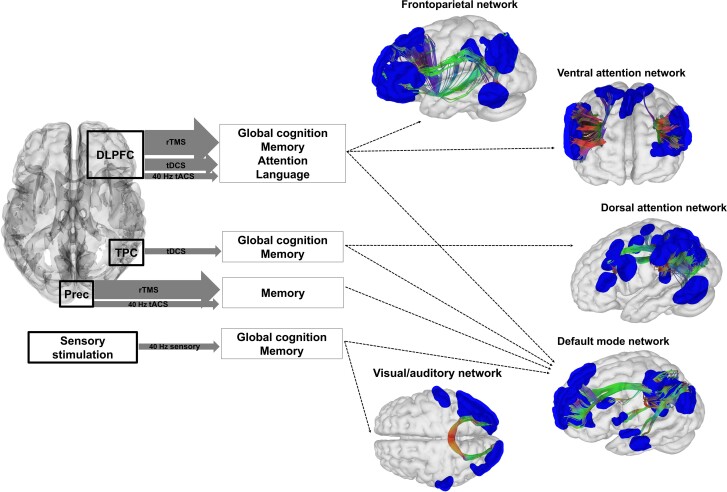Figure 1.
Effect of non-invasive brain stimulation on cognition in persons at high risk of Alzheimer’s disease dementia or with Alzheimer’s disease dementia. The image summarizes the degree of evidence that non-invasive brain stimulation (NIBS) techniques can improve cognitive functions in individuals at high risk of dementia or with Alzheimer’s disease (AD) dementia. NIBS techniques based on magnetic or electrical stimulation (e.g. rTMS, tDCS, 40 Hz tACS) commonly target the dorsolateral prefrontal cortex (DLPFC), the precuneus (Prec), or the temporoparietal cortex (TPC), while NIBS techniques based on sensory or electrical stimulation (e.g. auditory/visual, tACS) can target specific rhythms (e.g. 40 Hz). NIBS protocols variably affect cognitive functions and these effects are associated with the modulation of specific brain networks. Arrow size denotes the degree of evidence for each NIBS technique (thicker = higher). Functional brain networks are shown in blue and axonal connections with red/green-blue colour coding. Network hubs and axons were derived from resting state functional MRI and diffusion weighted images of a volunteer scanned on 7 T MRI. rTMS = repetitive transcranial magnetic stimulation; tDCS = transcranial direct current stimulation; 40 Hz tACS = transcranial alternate current stimulation in the gamma frequency; 40 Hz sensory = visual and/or auditory sensory stimulation in the gamma frequency; L = left; R = right.

